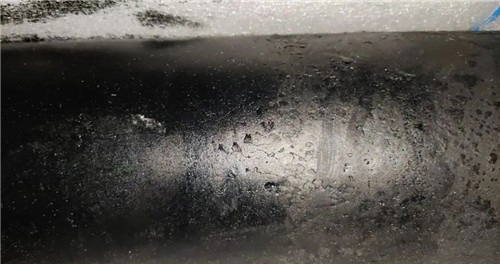The uniformity of ink color is crucial for the quality of newspapers. In black and white, it affects readability, while in color, it impacts the presentation of images. This is especially critical for full-page advertisements where uniformity across colors is essential to achieve the desired effect. There are various factors contributing to uneven ink color in newspapers. Here, I will analyze each factor systematically, focusing on equipment-related issues.
Aging of Electrical Components
Modern printing machines are highly automated, with modular management of electrical components. If these modules age, it may result in a mismatch between the control panel keys and their actual functions, leading to uneven ink color. During adjustment, it is necessary to correspond the control panel keys with the ink keys on the equipment and observe their sensitivity.
Improper Pressure of Rubber Rollers
It is crucial to strictly and properly adjust the pressure on all rubber rollers. Insufficient pressure can lead to poor ink and water transfer, while excessive pressure increases friction between rollers, causing them to heat up and accelerating wear and tear. Therefore, maintaining the right pressure between rubber rollers is vital for ink transfer. Regularly inspecting the pressure between each roller is an indispensable step in equipment maintenance.
Damage to Rubber Roller Bearings and Inappropriate Surface Roughness
Regularly remove all rubber rollers and inspect whether the roller bearings need replacement. Prolonged use without replacing bearings can lead to issues such as oil depletion, aging, and damage, resulting in misalignment or bouncing of rollers during high-speed operation. Due to the dense arrangement of rollers in printing machines, such issues may not be easily noticeable at low speeds. Therefore, disassembling and inspecting each roller individually is necessary to identify damaged bearings.
The surface roughness of rubber rollers also plays a crucial role in ink transfer, often overlooked by operators. Prolonged exposure to ink can create a smooth and hard film on the roller surface, while cleaning agents may cause unevenness. Hence, regular checks on the surface roughness of rubber rollers are essential.
Inspection of rubber rollers can be conducted in two ways: 1) removing rollers and checking surface wear while using a hardness tester to ensure ink roller hardness remains between 30-35HS and water roller hardness between 25-28HS; 2) measuring roller diameter with calipers and maintaining it within the factory-set range. Timely replacement and re-inking are necessary.
 The thickness of the ink layer on the ink fountain roller directly affects the amount of ink transferred to the anilox roller. Over prolonged usage of the ink fountain roller, the gap between the ink fountain roller and the ink knife may reduce, resulting in an overall decrease in ink transfer and insufficient saturation of colors in images.
Regular cleaning of the ink fountain roller is necessary to maintain a consistent gap between the ink fountain roller and the ink knife. Adjustments to the ink lever screws should be made to ensure an even layer of ink, approximately 3-5mm thick, adheres uniformly to the surface of the ink fountain roller. This ensures a consistent ink application on the ink rollers and stable ink transfer.
The thickness of the ink layer on the ink fountain roller directly affects the amount of ink transferred to the anilox roller. Over prolonged usage of the ink fountain roller, the gap between the ink fountain roller and the ink knife may reduce, resulting in an overall decrease in ink transfer and insufficient saturation of colors in images.
Regular cleaning of the ink fountain roller is necessary to maintain a consistent gap between the ink fountain roller and the ink knife. Adjustments to the ink lever screws should be made to ensure an even layer of ink, approximately 3-5mm thick, adheres uniformly to the surface of the ink fountain roller. This ensures a consistent ink application on the ink rollers and stable ink transfer.
Click to learn more about book printing, sticker printing, medicine box, hardcover book printing, PE bag, Religious book printing, shopping bag printing, catalog printing, and printing in China.
Apart from equipment-related factors, there are many other elements that can impact print color. Factors such as the pH level of the fountain solution, concentration ratios of the fountain solution, regulation of temperature and humidity in the printing workshop, paper quality, ink properties, and the skill level of the operator can all influence print quality. Only through continuous experience and the accumulation of knowledge during prolonged production can one understand and master these patterns, leading to high-quality printing results.

Comments
No comments yet. Be the first to react!